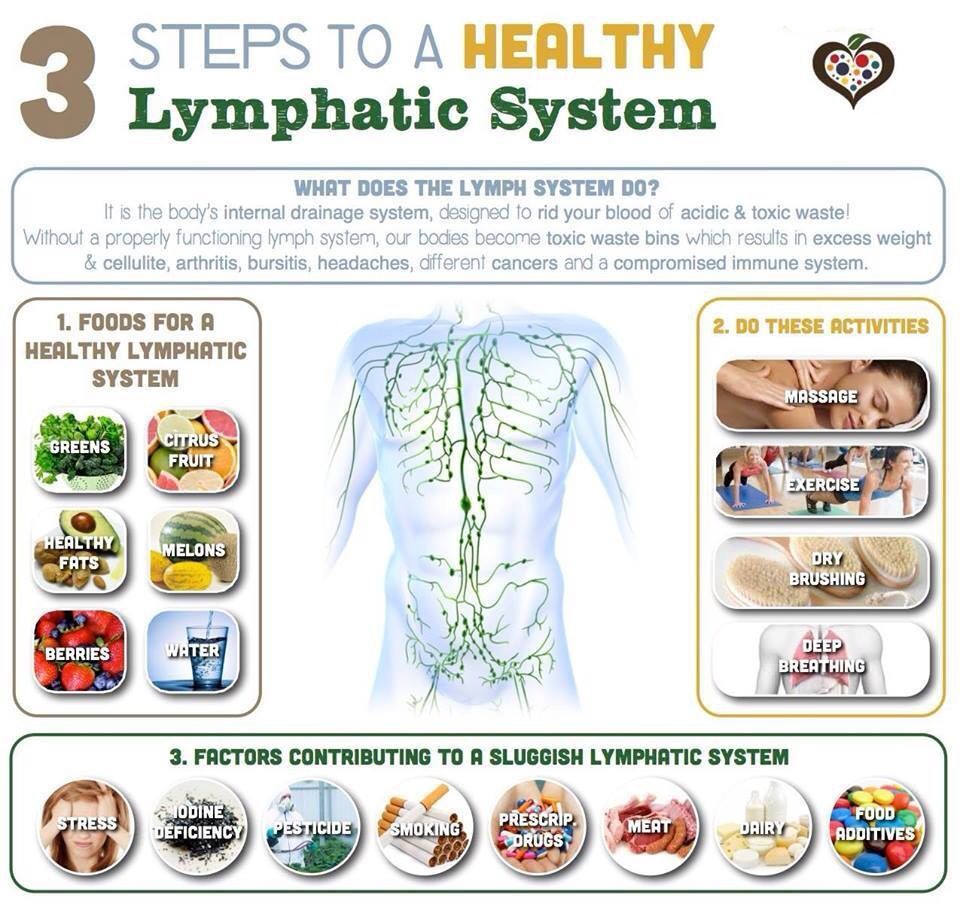
Ignoring the health of your lymphatic system means your immunity is going to suffer, and you’re more likely to deal with common illnesses and even long-term health problems. Here are five ways to boost your immune system and, moreover, support a healthy lymphatic system:
1. Reduce Inflammation and Improve Circulation
Eating a healthy diet, exercising, not smoking, getting enough sleep and reducing stress are all critical for lowering oxidative stress and halting the body’s natural detoxification processes. The circulatory system and lymphatic system rely on one another.
While blood circulates around the body via blood vessels, some fluid naturally leaks out and makes its way into tissue. This is a normal process that brings nutrients, water and proteins to cells. The fluid also gathers cells’ waste products, like bacteria or even dead or damaged cells like cancer cells.
Tissues located around the body can become inflamed and painful when circulation slows and inflammation builds. A healthy lymphatic system nourishes muscle, joint and other tissue because lymph vessels have tiny openings that let gases, water and nutrients pass through to surrounding cells (called interstitial fluid). The fluid then drains back into the lymph vessels, then goes to the lymph glands to be filtered and finally to a larger lymphatic vessel located at the base of the neck called the thoracic duct.
The thoracic duct dumps cleaned lymph fluid back into the blood, and on and on the cycle goes — which is why circulation is important for keeping the system running smoothly, otherwise tissue can become swollen with excess waste. To keep circulation pumping and the lymphatic system functioning optimally, it’s important to load up on all the essential nutrients, like vitamins, minerals, electrolytes and antioxidants, you need.
2. Follow an Anti-Inflammatory Diet
The more nutrient-dense your diet, and the less chemicals entering your body, the better your lymphatic system can work. Foods that put stress on the digestive, circulatory and immune systems include common allergens (like dairy products, gluten, soy, shellfish or nightshades, for example), low-quality animal products, refined vegetable oils and processed foods that contain chemical toxins.
Anti-inflammatory foods, on the other hand, supply much-needed nutrients and antioxidants while also lowering free radical damage (also called oxidation stress) that ages the body and lowers immunity.
Some of the key high-antioxidant foods to focus on include:
green leafy vegetables
cruciferous veggies (broccoli, cabbage, cauliflower, etc.)
berries omega-3 foods like salmon and wild seafood
nuts and seeds (chia, flax, hemp, pumpkin, etc.)
unrefined oils like extra virgin olive oil and coconut oil
herbs and spices (ginger, turmeric, garlic, for example)
3. Exercise
The lymphatic system works best when you move your body, which helps keep fluids circulating and nutrients reaching your cells. There’s a reason why being stagnant causes you to feel more achy, stiff and prone to becoming sick.
Any type of regular exercise and movement (such as simply walking more) is good for keeping lymph fluid flowing, but some exercise seems to be particularly beneficial, including yoga (which twists the body and helps fluid drain), high-intensity interval training (also called HIIT workouts, which is great for improving circulation) or “rebounding.“
Rebounding is growing in popularity and involves jumping a small trampoline that you can keep inside your house. It only takes up a few feet, and just five to 10 minutes of jumping daily can really get your heart rate up and help keep your lymphatic system running smoothly.
(And why not follow up exercise with a relaxing detox bath to further help improve blood flow?)
4. Massage Therapy and Foam Rolling
Foam rolling and massage therapy are both usual for preventing swelling, pain and fluid buildup with tissue. Foam rolling, also called self-myofascial release, is a type of self-massage that many people do before or after exercising. Its purpose is to help tissue repair more easily and break up muscle and tissue adhesions that can cause tightness and injuries. Foam rolling also increases blood flow to your muscles and is used to help with quicker recovery and better performance.
“Lymphatic drainage massage” is a type of specialized massage therapy that helps cells release toxins and breaks up lymph congestion. Studies have found it’s beneficial for lowering pain intensity, pain pressure and pain threshold. (7) Massages can activate the lymphatic system and help flush excess fluid from within tissues.
Some massage therapists are specially trained in manual lymphatic drainage, but any type of deep tissue massage is also beneficial. You can even massage yourself to help reduce pain in swollen lymph nodes, muscles or joints.
5. Infrared Sauna Treatment
Never heard of infrared saunas? This simple treatment is one of the best ways to naturally detox the body and support an overall healthy immune system. Infrared sauna therapy works by increasing sweat production so more toxins are removed from tissue. It can also improve blood flood and help with tissue healing, which is critical for lymphatic health.
Studies show that regular infrared sauna treatments can improve the quality of life for people living with chronic pain, chronic fatigue syndrome, depression and congestive heart failure. (8) People who use sauna therapy love it because it’s relaxing, healing, cost-effective, can be done within your own home and really works. Infrared saunas use heat lamps that generate infrared light waves, which make their way into tissues and promote cell regeneration along with sweating.